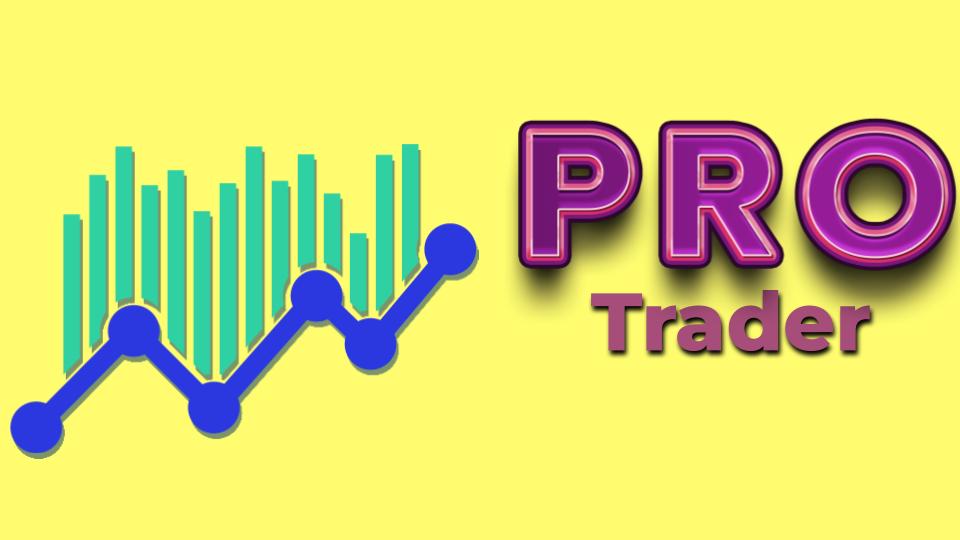Share Market Course
“At Profitmax Academy, our award-winning Share Market Classes are designed to provide comprehensive and practical education, ensuring participants gain mastery over various aspects of Share Market.
Key Learning Objectives
- The objective of this Course is to Make You a Stock Market Expert. Throughout the course, we focus on hands-on learning and real-world application across all modules. This helps to create a deep understanding and practical skill development.
- Participants will embark on a structured learning journey starting with the Fundamentals of Share Market, where they will immediately apply concepts through practical exercises.
- The curriculum then progresses to Technical Analysis and Advanced Technical Analysis, supported by live trading sessions to reinforce learning in real-time market conditions.
- Futures & Options trading with Data Analysis: Develop skills in analyzing futures and options data to make informed trading decisions and optimize intraday trading
- Combination of Chart Analysis & F&O Data Analysis: Integrate technical chart analysis with futures and options data analysis to identify fake breakouts
- Stock Identification for Swing Trading: Learn strategies to identify stocks with potential for swing trading based on technical indicators and market trends.
- Learn our unique strategy which works on footprints of Demand and Supply of big players.
- Learn Advanced Hedging Strategies to mitigate your risk in the Share market.
- Currency/Commodity (Forex) trading is the best option for traders who want to utilize the maximum trading opportunities in the Market.
- Practical sessions and live trading simulations help participants acquire proficiency in executing strategies across different market scenarios.
Key Features:
- Practical Oriented Training Program with Live Trading Experience.
- Basic to Advance Course Content including Hedging Strategies & Commodity Market.
- Learn the Best Trading Strategy with Specially Developed Indicators.
- Hands-On Learning: Practical sessions and case studies enhance understanding.
- Learn Intra-Day Trading, Swing Trading & Long-Term Investment.
- Career Advancement: Ideal for beginners and professionals aiming to excel in trading.
Program Outcome:
By the end of our program, you will be a Share Market Expert having exposure to all the best trading & Investing Strategies. You will gain the skills and confidence needed to execute trades as a Professional Trader. You will have live Market exposure to Profit, Risk, Trade Management & Mind Psychology. You will be able to Manage & grow your money like a Professional Investor.
- BASIC OF SHARE MARKET + Practical
- VALUE INVESTING + Practical
- SWING TRADING + Practical
- VARDAN STRATEGY for INTRADAY TRADING + Practical
- FUTURES AND OPTIONS + Practical
- ADVANCED OPTION HEDGING STRATEGIES + Practical
- CURRENCY, COMMODITY & FOREX + Practical
Fundamental analysis and technical analysis is the pillars of stock market. It is an essential tool for investors and traders to make informed decisions, manage risks, to analyze market movements, identify patterns, and make informed decisions and build a successful investment strategy.
- Introduction to Share Market:
- Overview of the stock market, its functions, and its role in the financial ecosystem.
- Regulatory System of Share Market:
- Understanding the share market's regulatory bodies and systems to ensure a fair and transparent trading environment.
- IPO (Initial Public Offering):
- Explanation of IPOs, the process by which companies go public, and how investors can participate.
- How to Select a Company for IPO:
- Criteria and considerations for choosing companies when participating in an IPO.
- Important Things to Check Before Applying for IPO:
- Key factors and due diligence steps to take before applying for an IPO.
- Important Tools for IPO Selection and Fundamental Analysis:
- Overview of essential tools and methods used in analyzing companies and IPOs.
- Introduction of Technical Analysis:
- Overview of analyzing stock market data, focusing on historical price and volume patterns.
- Long Position:
- Explanation of taking a long position, where an investor expects an asset's price to rise.
- Short Position:
- Understanding a short position, where an investor bets on declining an asset's price.
- Elements of Trading:
- Insight into essential elements such as entry and exit points, stop-loss, and take-profit orders.
- Risk Management:
- Strategies to manage risks effectively, including position sizing and setting risk-reward ratios.
- Types of Charts:
- Explanation of different chart types, including line charts, bar charts, and candlestick charts.
- Types of Trends:
- Identification of trends—uptrends, downtrends, and sideways trends—essential for decision-making.
- Types of Candles:
- Understanding various candlestick patterns and their significance in price movements.
- Bullish Patterns (Two/Three Candlestick):
- Recognition and interpretation of bullish candlestick patterns for predicting potential price rises.
- Bearish Patterns (Two/Three Candlestick):
- Identification and analysis of bearish candlestick patterns indicating potential price declines.
- Support and Resistance:
- Understanding key levels where the price often stalls or reverses—critical for market analysis.
- Moving Support and Resistance:
- Analyzing dynamic support and resistance levels using moving averages, reflecting evolving market trends.
This module equips traders with the tools to analyze stocks for investment and make informed decisions based on technical indicators.
- Business Modules of a Company:
- Understanding the business model of a company, its market position, and the industries it operates in.
- Peer Comparison of Company:
- Analyzing a company by comparing its performance and metrics with its industry peers.
- Important Ratios like PE, ROCE:
- Explanation of key financial ratios such as Price-to-Earnings (PE) ratio and Return on Capital Employed (ROCE).
- Selection of Companies to Build Your Wealth:
- Strategies for selecting and building a diversified portfolio of companies for long-term wealth creation.
- How to Create and Manage Your Share Market Portfolio:
- Practical insights on creating and effectively managing a share market portfolio.
- Corporate Actions (Dividend, Bonus, Right Issue, Splits, Buy Back, OFS, etc.):
-Understanding various corporate actions and their impact on shareholders, including Dividend, Bonus Issues, Rights Issues, Stock Splits, Buybacks, and Offer for Sale (OFS).
- Important Trading Strategies:
- Overview of key trading strategies essential for successful market participation.
- Long-Term Investment:
- Applying technical analysis principles for making informed decisions on long-term investments.
- Portfolio Management:
- It’s an art to grow your Money
This module delves into advanced technical analysis concepts, empowering traders with sophisticated strategies to navigate diverse market conditions and achieve their trading goals.
- Intraday Trading:
- Strategies and considerations for traders engaged in short-term intraday trading.
- Swing Trading:
- Techniques for traders aiming to capitalize on short- to medium-term price movements.
- How to Identify Entry Levels:
- Techniques for identifying optimal entry points based on technical analysis.
- Protective Stop Loss:
- Understanding and implementing protective stop-loss orders to manage risk.
- How to Analyze Market Conditions:
- Methods for analyzing market conditions to adapt to changing dynamics.
- Expected Targets:
- Determining potential price targets using technical analysis.
- Trailing Stop Loss to Take Maximum Target:
- Utilizing trailing stop-loss orders to maximize profit potential.
- Price Patterns:
- Understanding various price patterns that provide insights into future market movements. Good for Short term returns
- Bullish and Bearish Price Patterns:
- Double Bottom, Inverted Head & Shoulder, Cup with Handle, Head & Shoulder, Double Top, Handle with Cup, Wedges. In-depth exploration of various price patterns and their significance in market analysis.
This module focuses on advanced Vardhan strategy, incorporating price action, multi-time frame analysis, and other tools to enhance trading precision.
1. Why Price Action?
- Understanding the significance of price action in analyzing market movements.
2. Benefits of Demand and Supply:
- Exploring the advantages of using Demand and Supply strategies in trading.
3. Identification of Zone:
- Techniques for identifying zones critical for Demand and Supply analysis.
4. What is Demand?
- Understanding the concept of demand in the context of market dynamics.
5. What is Supply?
- Understanding the concept of supply in the context of market dynamics.
6. Zone Booster:
- Strategies to enhance trading decisions using the concept of zone boosting.
7. Identification of Quality Zone:
- Recognizing high-quality demand and supply zones for effective trading.
8. Risk to Reward Ratio:
- Understanding and applying risk-to-reward ratios for balanced trading decisions.
9. Advance Price Action:
- Delving into advanced techniques in price action analysis.
10. Multi Time Frame Analysis (HTF, ITF, LTF, RTF):
- Analysing market trends and zones across multiple time frames.
11. Curve Analysis:
- Techniques for curve analysis to predict potential market movements.
12. Support and Resistance:
- Utilizing support and resistance levels within the Demand and Supply strategy.
13. High Probability Zone Identification:
- Strategies for identifying high-probability zones for trading.
14. Gap Study:
- Understanding and incorporating gap analysis into Demand and Supply strategies.
15. Show Some Zones and Examples of D & S:
- Practical demonstrations and examples illustrating the application of Demand and Supply strategies.
This module provides comprehensive insights into futures and options trading, covering key concepts, strategies, and analytical tools for effective participation in derivative markets.
1. Why Futures and Options:
- Understanding the rationale and advantages of engaging in futures and options trading.
2. What is Options Trading?
- Introduction to the concept of options trading and its fundamental principles.
3. What are Futures?
- Exploring the nature and characteristics of futures contracts in the financial market.
4. Types of Contracts:
- Understanding various types of contracts within the futures and options market.
5. Lot Size:
- Explanation of the standardized size of a futures or options contract.
6. Option Writing:
- Introduction to option writing strategies and their implications.
7. Expiry:
- Understanding the concept of expiration in the context of futures and options contracts.
8. Option Premium:
- Determinants and factors influencing the price of options.
9. MTM (Mark-to-Market):
- Process of marking the value of an asset to reflect its current market price.
10. Open Interest:
- Explanation of open interest and its significance in derivatives trading.
11. Settlement:
- Understanding the settlement process for futures and options contracts.
12. Components of Premium:
- Breakdown of the components contributing to the price of an option.
13. What is Intrinsic Value:
- Understanding intrinsic value in the context of options pricing.
14. What is Time Value?
- Exploring the concept of time value in options pricing.
15. Option Greeks (Delta, Gamma, Theta, Vega, Rho):
- Detailed explanation of the Greek letters representing various factors affecting options pricing.
16. Option Chain Analysis:
- Techniques for analyzing an option chain to make informed trading decisions.
17. How to Find Trends:
- Methods for identifying trends within futures and options markets.
18. PCR Ratio (Put Call Ratio):
- Understanding the put-call ratio and its implications for market sentiment.
This module provides in-depth insights into advanced hedging strategies, equipping traders with the knowledge to navigate diverse market conditions and manage risk effectively.
1. Benefits of Advanced Options:
- Exploring the advantages and opportunities presented by advanced options trading strategies.
2. Advanced Option Strategy:
- Overview of sophisticated strategies involving options for strategic market positioning.
3. Hedging Strategy:
- Understanding hedging strategies to mitigate risk in volatile markets.
4. Straddle:
- Explanation of the straddle option strategy, involving simultaneous purchases of call and put options.
5. Strangle:
- Introduction to the strangle option strategy, balancing risk and reward in market fluctuations.
6. Expiry Strategy:
- Strategies for managing options positions as they approach expiration.
7. What To Do in a Super Bullish Market?
- Tactics and considerations for navigating an intensely bullish market.
8. What To Do in a Bullish Market?
- Strategies for capitalizing on opportunities in a generally bullish market.
9. What To Do in a Bearish Market?
- Approaches and tactics for navigating a market with a bearish outlook.
10. What To Do in a Super Bearish Market?
- Strategies for managing positions and making informed decisions in an extremely bearish market.
This module covers both currency and commodity trading, providing comprehensive insights into the forex market and strategies for effective trading in various commodities.
1. Introduction to Currency Market:
- Overview of the currency market, its structure, and participants.
2. Types of Currency:
- Understanding different types of currencies in the global market.
3. Currency Pairs:
- Explanation of currency pairs and how they are quoted in the foreign exchange market.
4. Non-Agri Commodities (Crude Oil, Gold, Silver, NG, Copper):
- Introduction to non-agricultural commodities and their significance in trading.
5. Commodity Trading Strategy:
- Strategies for effective trading in commodities like crude oil, gold, silver, natural gas, and copper.
6. Introduction to Forex Market:
- Overview of the forex market, its decentralized nature, and its role in the global financial system.
7. Factors Affecting the Forex Market:
- Understanding the various factors influencing currency exchange rates.
8. What is a Pair:
- Definition and explanation of currency pairs in the forex market.
9. Types of Pairs:
- Differentiating between major, minor, and exotic currency pairs.
10. How Forex Trade Works:
- Explanation of the mechanics of forex trading, including buying and selling.
11. Positions for Trading:
- Different types of trading positions—long and short—in the forex market.
12. Important Terminology:
- Key terms used in forex trading and their meanings.
13. Spread:
- Understanding the spread as a fundamental concept in forex trading.
14. Margin / Leverage:
- Exploring the concepts of margin and leverage in forex trading.
15. Lot and Lot Size:
- Explanation of lots and lot sizes in the context of forex trading.
16. What is Pip / Tick:
- Definition and significance of pips/ticks in measuring price movements.
17. Trading Hours for Forex:
- Understanding the active trading hours for different forex markets.
18. Advantages of Forex Market:
- Highlighting the benefits and advantages of participating in the forex market.
19. Risk Involved:
- Assessing and managing the risks associated with forex trading.
- 1-year Unlimited Repeat Facility
- Workbook / Study Material
- Live Stock Alert System for Intraday Trading
- Live Stock Alert System for Swing Trading
- Live Stock Alert System for Long-Term Investment
- 1-year of Portal access
- Telegram channel access for Daily Analysis & Updates
- 3 Months of Demand and Supply zone Indicator Access
- Combo Indicator Access of Special Strategies
- One-on-one solving sessions with trainers
- Lifetime support in your financial journey
- Support for your NISM Certification Exam
- Profitmax Academy Certificate
- Certification from BSE.




























Reviews
There are no reviews yet.